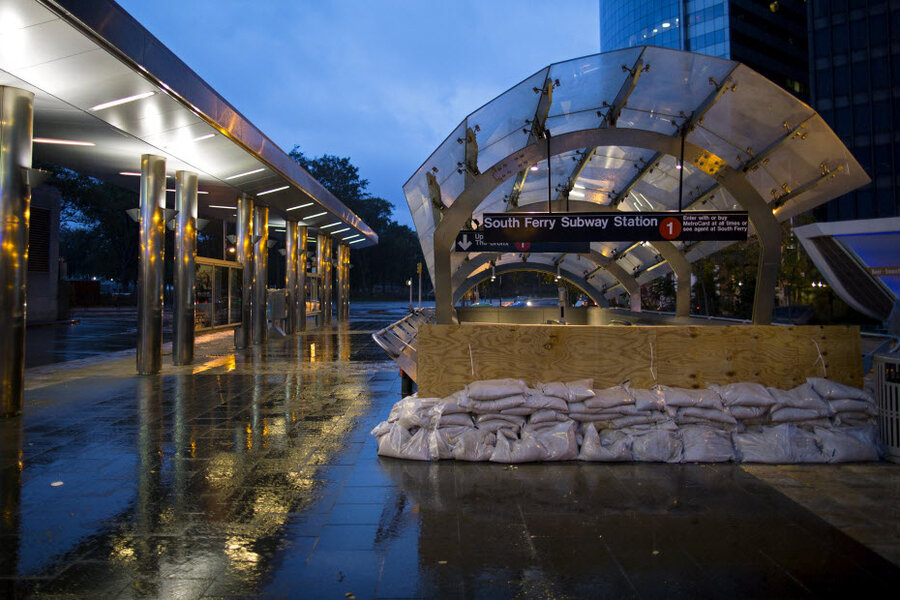Hurricane Sandy: Lights out in Lower Manhattan
Loading...
| New York
New York power company Consolidated Edison Inc ED.N said on Monday that it had shut off power to part of Lower Manhattan to protect electrical equipment and to allow for quicker restoration after Hurricane Sandy passes.
The company said in a release it cut service to two areas. The first is bounded by Frankfort Street to the north; William Street to the west; Wall Street to the south; and the East River. The second area is bounded by Broadway to the west; Wall Street to the north; and the southern tip of Manhattan.
The areas, some of which had already been evacuated, include about 6,500 customers. Con Edison said that, as of 7 p.m. Eastern time there were more than 156,000 customers in New York City and Westchester County without power due to Hurricane Sandy.
Sea water from Hurricane Sandy's storm surge threatened to flood the underground electrical equipment, prompting the shutdown, Con Edison said.
The company will have to wait for flood waters to recede before workers can enter some facilities to assess damage, Con Edison said.
As equipment is inspected and determined safe to energize, the company said the highest priority for restoration will go to critical customer facilities that have an impact on the general public such as mass transit, hospitals, police and fire stations, and sewage and water-pumping stations.
Con Edison said workers continue to monitor underground electrical delivery equipment in other areas of Manhattan south of 36th Street, along with section of Brooklyn, Queens and the Bronx, for flooding and possible shutdowns.
A few hours before the power shutdown, the company notified customers through an automated calling system that their power might be shut off.
"We wanted to let people know in and around these areas that there may be disruption to their service," Con Edison spokesman Alfonso Quiroz told Reuters.







